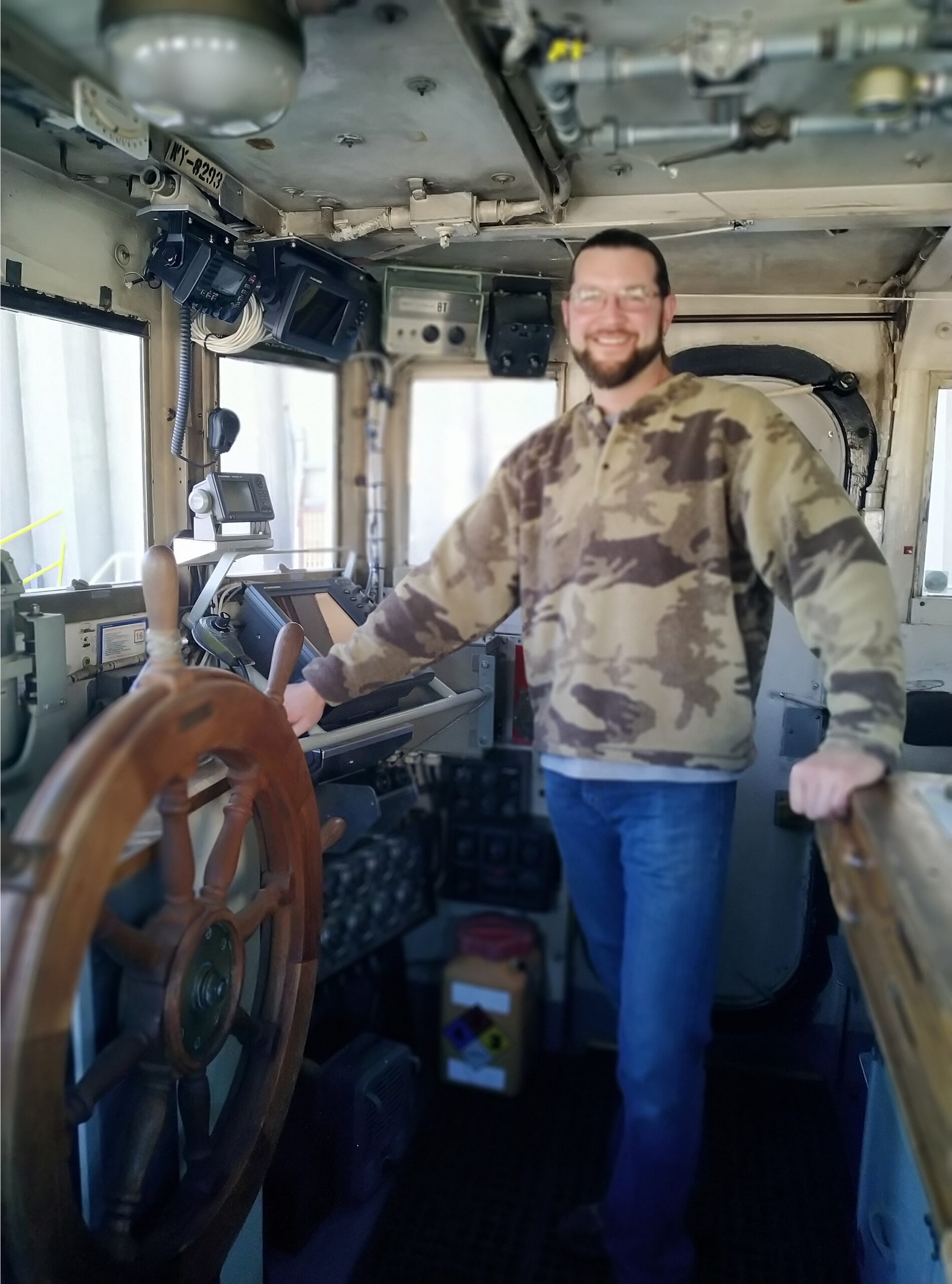
Max Morgan became captain of the Neeskay, the UWM School of Freshwater Sciences’ research vessel last fall. He is a graduate of the UWM School of Freshwater Sciences master’s degree program.
Last October, Max Morgan landed his dream job: captain of the Neeskay, the UW-Milwaukee (UWM) School of Freshwater Sciences’ research vessel. The Neeskay is the only research vessel that explores the Great Lakes year-round. It allows UWM students, faculty, and scientists, as well as partner researchers, to focus on answering fundamental questions essential to the successful management of the Great Lakes.
Here’s what the School of Freshwater Sciences alum has to say about how he’s combined his passions for boating and science into the job he’s always wanted.
What was your path to working at the School of Freshwater Sciences?
I love the water and I always loved boats. I grew up on Lake St. Claire [near Detroit]. If you look back at pictures, there’s pictures of me driving boats when I was very young while sitting on my dad’s lap.
I’ve always dreamed of being a captain. I did my undergrad at Central Michigan University in natural conservation and biology with a concentration in freshwater sciences. Then I worked on the East Coast for several years as a NOAA fisheries observer. I worked on the Lake Guardian [the EPA’s Great Lakes research vessel] for eight years, so I’ve seen every single nook and cranny on the Great Lakes. During my master’s at SFS, I did an internship under the previous captain, Geoff Anderson. One day, he asked if I wanted to work at SFS.
What do you like most about your job?
The two most exciting things for me are that I like teaching the next generation and I like helping scientists realize their goals. I love sharing my knowledge with students. I love the excitement and wonder you sometimes get in people’s eyes when they first do something or when they really enjoy it.
I like working with the researchers because they come up with great ideas. Then I have to come up with ways to make what they want to do work in real life. It’s problem solving. Because I have a master’s degree in freshwater science, I understand what the data means and what they are looking for — and I know how to manipulate the ship and do a survey plan to get the best quality data.
I also do my own research. I love fish as much as I love water and boating, but you can’t just study fish. You have to study the whole food web. My biggest things are trying to figure out how the fish are doing, tracking their movement through their lifecycle. Mysid shrimp are a big part of the food web, but you need a lot of them to study. I’m trying to perfect gear catchability and looking at how could we get the most Mysid shrimps so we have the samples we need.
What’s the most interesting or challenging experience you’ve had on the Neeskay?
One of the coolest things we do is we service the buoys. We put out a buoy at Atwater Beach and one in Green Bay. It’s challenging because a buoy is large. You have to hook it up to mooring points at the bottom of the lake. You have to think about how you’re going to put the buoy in the water, so it sits right and is there when you come back.
The Atwater buoy is directly used by a large number of people in the city, and we’re the ones who take care of it. You can go online and get real time data, like water temperature up to 60 feet deep. If I want to take my boat out today, I can send a text to the buoy, and it will text me back all the information I need. If that buoy didn’t go out in spring, people would want to know why.
What’s next?
Because I have such strong ties to UWM and I like Milwaukee, this is a great fit. There’s a lot of potential for the School and for me. I’ve helped faculty with the 513 course. I taught a class last year and I will again this year. I love doing stuff with the public. I would love to be involved in planning the new ship [the R/V Maggi Sue] — we’ll have the opportunity to build it into whatever we want. The more involved I can be the better.
